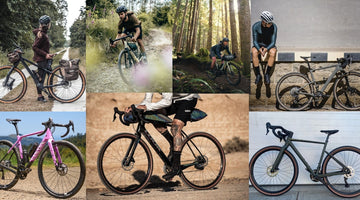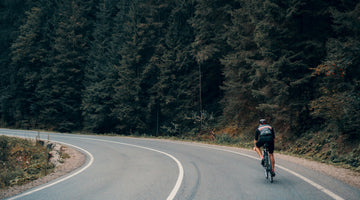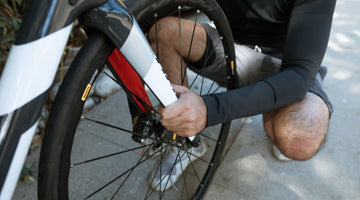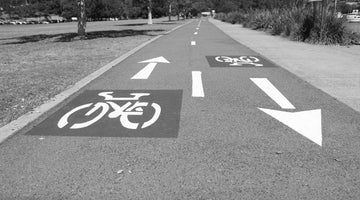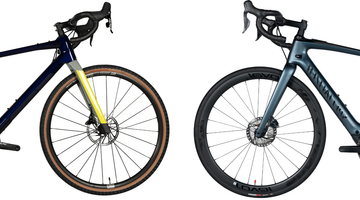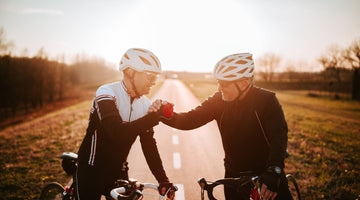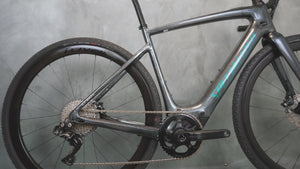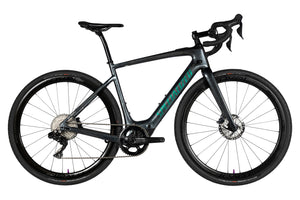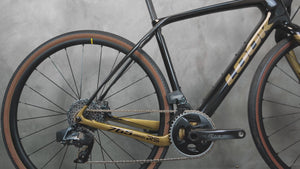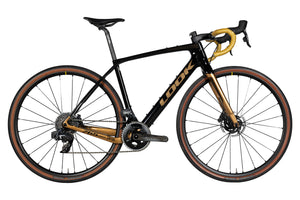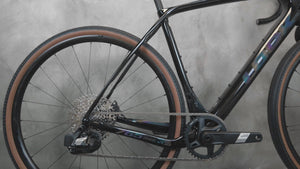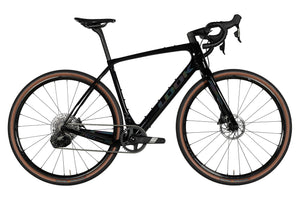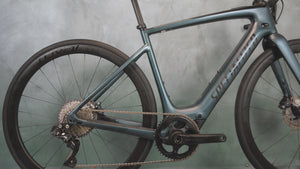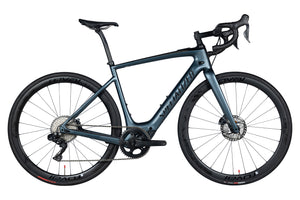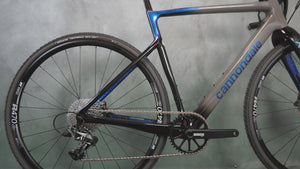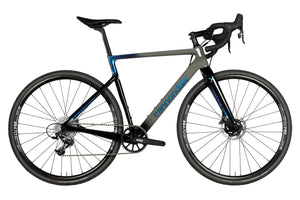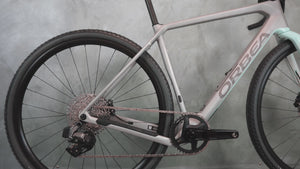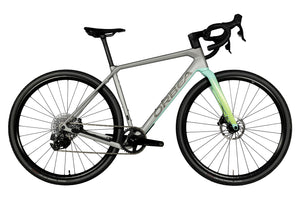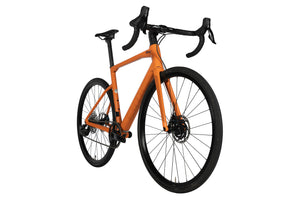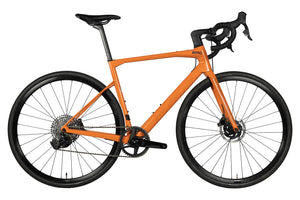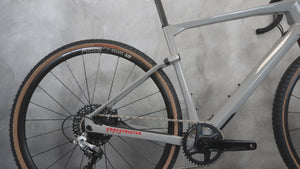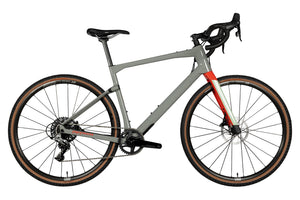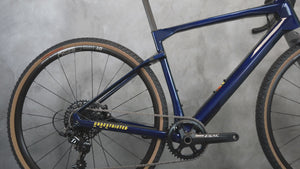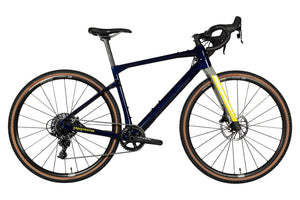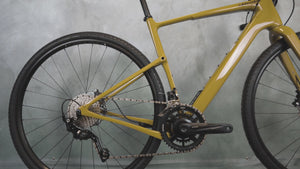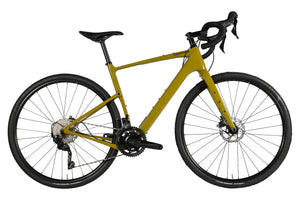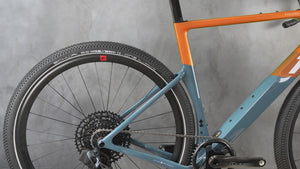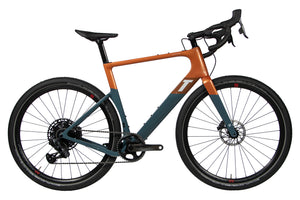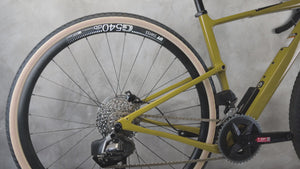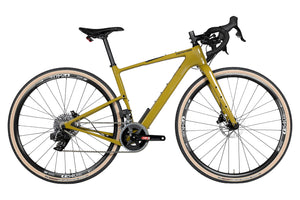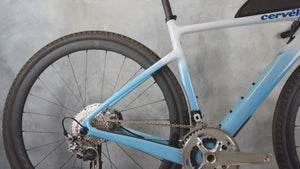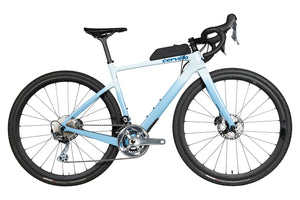Bikepacking: the ultimate checklist to make sure you don't forget anything
In this Article
Published on July 27, 2023
Bikepacking is not something you can improvise. A little organization is required before pedaling in total freedom... Very popular in recent years, bikepacking consists of taking off for several days by bike with little luggage. The idea is to discover new places, a little away from busy areas. The fact that you don't have to pack much encourages you to get back to basics, to reconnect with yourself and with nature. Beyond the tourist aspect, bikepacking is first and foremost a life experience, a time-out during which you take the time to travel by bike away from your hyper-connected everyday life. Bikepacking is also a moment of freedom, with no constraints. But for everything to go as smoothly as possible, it's imperative that you prepare for your first bikepacking trip. The bike itself, bags, map, accommodation... We have put together the only bikepacking checklist you need to prepare for your next cycling trip.

Preparing for your first bike trip
Let's be clear: not everything will go according to plan. A bikepacking trip always has an element of the unexpected, but most of the time these are minor setbacks. Nevertheless, before you consider taking your first bikepacking vacation, you need to prepare yourself psychologically for the hazards of this kind of tour.
If you're a seaside regular or a weekend thalasso addict, there's no denying that it's going to be very different. There may be times when you wonder why you chose to do this of your own free will. But believe us, you won't regret it... Beyond the health benefits, traveling by bike is an opportunity to rediscover the pleasure of silence. It's also a particularly propitious time for meditation and letting go, without artifice.
Regarding your physical condition, you'll need to make an honest assessment of your current level. With a little training, anyone can do bikepacking. You just need to know how to adapt the duration, elevation and distance of your trip. If you don't ride regularly, start out by cycling for 2 or 3 days, for example. And wait a little longer before embarking on a 7-day Dunkirk-Bayonne trip along the coast...
👇 At the end of this article, we'll give you our advice on how to plan your itinerary according to your level: distance, elevation, number of days... Keep reading! 👇
Gravel or MTB: choosing your best bikepacking equipment
Halfway between mountainbike and the road bike, gravel is clearly the bike best suited to bikepacking. It lets you take to the highways, trails, greenways and towpaths whenever you like. In terms of weight, a gravel bike is close to a road bike, and lighter than the mountainbike by around 2 kg. A major advantage when you're planning to spend several days pedaling.
💡 On our site, you'll find a pretty selection of gravels inspected from top to bottom by our mechanics. We'll give you the benefit of low prices, even though most of these top-brand bikes have never been ridden and are still covered by a manufacturer's warranty! A unique opportunity to ride a quality gravel bike without breaking the bank! 💰
However, if for you adventure rhymes with forests and greenery, perhaps the mountainbike is worth considering. Gravel is appreciated for its all-round appeal, but if you're planning some very wild bikepacking in the greasy dirt of the woods, then a mountainbike will give you traction, grip and stability. Don't worry about that, MTB-wise, we've got you covered too !
Finally, choosing the right bike also means choosing the right size and adjustment. To be sure you're making the right choice, don't hesitate to call our fitting experts. They'll be happy to help you choose your future bikepacking partner!
Last but not least, carefully check the condition of your bike before you set off: brakes, tires, transmission, screws and bolts. A little check-up can save you a lot of trouble.
Essential equipment and accessories: the complete list for successful bikepacking
The idea in bikepacking is to travel light... So you're going to have to stick to the bare minimum. Just enough to keep you comfortable and hygienic.
The essentials
The basics the equipment of every good cyclist. That means:
- helmet
- sunglasses
- gloves
- cycling shoes
- cycling shorts and jersey
- large water bottles, ideally isothermal
Depending on the time of year, the weather forecast and where you're going, you'll need a waterproof jacket, a long-sleeved jersey and/or cuffs.
But since you won't be pedaling all day, you'll also need to pack something comfortable to wear for your evening rest:
- warm, casual jogging pants
- sneakers or flip-flops
- a few T-shirts
- a bathing suit if you plan to go swimming
- socks and underwear, of course
In case of mechanical problems, you'll need to take:
- inner tubes
- a small pump
- multi-tool
- puncture repair kit (patches, tire levers, glue, etc.)
- a rag
We'll come back to this later, but if you haven't opted for a bed & breakfast, hotel or rental, you'll need to plan for sleeping and eating. As for water, you'll need to plan ahead for access points to drinking water along the way, but we'll come back to that in the last section. For your bivouac don't forget to pack:
- a tent or hammock
- a sleeping bag
- a small airbag
- small pocket stove
- some crockery
- food suitable for long physical exertion
Then take along hygiene products and everything you need in case of injury or emergency:
- shower gel (which doubles as shampoo)
- toothbrush and toothpaste
- towel
- toilet roll
- sanitary pads
- tissues
- sunscreen and biafine
- plasters
- antiseptic
- compresses
- analgesic tablets
- if necessary, your usual treatment (asthma, etc.)
Last but not least, don't forget:
- cell phone and charger
- GPS meter (or a map for those who want to do it the old-fashioned way) and charging cable (not necessary if you choose the map option, of course...)
- external power supply(s) or solar charger
- lighter
- a book to keep you busy in the evening (even if, in theory, you'll fall asleep easily)
- cash (not too much!)
- ID and credit card
- garbage bags
Bikepacking bags

To transport all this, let's talk about the must-have accessories for every good bike tourer: bike bags!
You'll soon realize that you need to optimize space as much as possible, because there aren't many places on a bike to put luggage. In general, you hang two bags to the frame (one above the horizontal tube and one below), one on the handlebars and one under the saddle. You can also add a backpack (not too heavy).
Distribute weight intelligently. The heaviest objects should be as close as possible to the center of gravity, i.e. in the bottom frame bag (also known as the "saddlebag").
Items you'll need often (food, cell phone, etc.) should be in the handlebar bag. Finally, the saddle bag will hold your repair kit and first-aid kit, for example.
A good game of Tetris!
Bikepacking organization: the route
Now that you and your bike are ready for adventure, there are a few unanswered questions: how do you organize your bikepacking route? where do you go? how far do you ride each day? what do you need to pay attention to?

Bikepacking to where?
As bikepacking veteran Pierre Lejeune once said we interviewed him, you don't have to go far to have a good time. Bikepacking is a state of mind, a feeling of freedom that can be felt anywhere.
If this is your first bikepacking trip, France or a neighboring country should be your first choice. Firstly, because there are bound to be some magnificent spots close to home. Secondly, because it will be easier to get back on the road if the adventure doesn't go exactly as you planned (public transport, calling a friend...).
How many kilometers per day can I bikepack?
Numerous applications enable you to determine your route precisely: Strava, Komoot, Géovélo, RidewithGPS, Google Maps...
Pay attention to the gradient, distance and type of surface on your route. Don't plan to perform, that's not the idea here. Don't forget you're loaded!
Broadly speaking, you can base yourself on the following distances:
- for beginners or a family outing no more than 50 km per day for a maximum of 3 days
- for regular cyclists no more than 80 km per day for 5 days
- for top-level athletes who are used to cycling for experienced cyclists: approx. 100 km per day for 7 to 10 days max.
Once again, these distances should be adapted to the profile of your trip. The important thing is not to overestimate your strengths: it's better to do less than you could have done than the opposite...
What else should you look out for?
Once you've calibrated your number of kilometers, fine-tune your itinerary and analyze it in detail. For example, be sure that you'll be driving mainly on roads with little traffic. Make sure you don't plan to spend hours on a trunk road, and (it goes without saying) absolutely avoid two-lane roads!
Clearly plan your daily routes and import them into your GPS counter.
Make sure you don't stray too far from civilization, not least because you'll need to replenish your food and water supplies frequently. Injuries or mechanical problems can occur, and in such cases it's best not to be hours away from the nearest village.
💧 Focus on water: it's essential to be able to hydrate easily. The website Water Cycling is a collaborative site where you'll find freely accessible water points. Always make sure that the water is not indicated as non-drinkable. Remember to gauge the level of your water bottles when you pass through a village. Stop off in a store or ask the locals for some fresh water if you need it.
As for sleeping arrangements, it's up to each individual... Some people prefer to take the adventure as far as sleeping in a hammock under the stars, while others feel that a night in a hotel is well deserved. If you're in the latter case, you'll need to be able to secure your bike for the night.
These are just two possibilities, but a multitude of variations exist: a night with a local, a tent in the middle of nowhere, camping, a bed & breakfast, and so on.
One important thing: plug in all your electronic devices as soon as you can. You're not the only one who has to recharge the batteries in the evening... ⚡
Now you're ready to begin your bikepacking adventure. We wish you lots of happiness on the bike, and lots of great encounters. Take advantage of this unique moment to disconnect. When you return, leave us a comment to tell us about your experience. 😉



